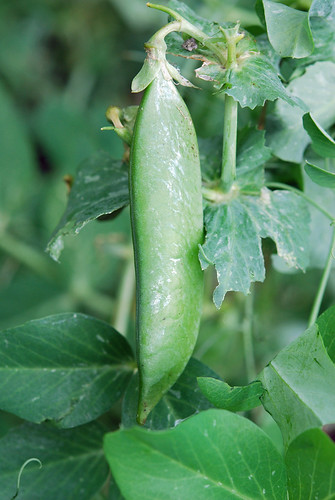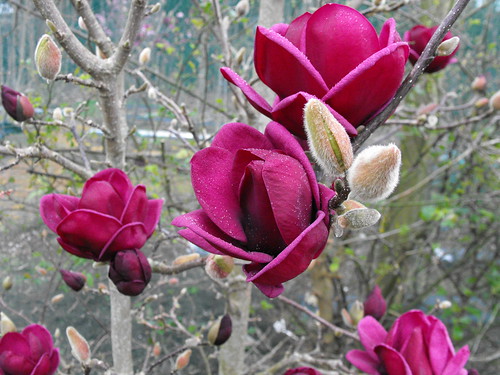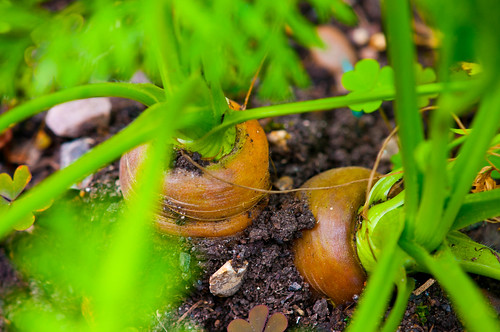Real World Gardener is funded by CBF, Community Broadcasting Foundation.
REALWORLD GARDENER NOW ON FACEBOOK
The complete CRN edition of RWG is available on http://www.cpod.org.au/ , just click on 2RRR to find this week’s edition.
The new theme is sung by Harry Hughes from his album Songs of the Garden. You can hear samples of the album from the website www.songsofthegarden.com
Spice it Up
with herb expert and author, Ian Hemphill for Herbies Spices.
You may not have heard of this spice before, but prepare to be surprised at what this spice can do. Let’s find out….
The spice is tasty on grilled meats and fish or as a seasoning for rice. It complements lentils and other beans as well as vegetables.Substitute it into any dish that you need to use lemon juice.Sumac is used a lot in a tang tomato appetiser called Za’Atar. I’ll post that recipe up on the web. If you don’t have a computer, write to me and I’ll send you a fact sheet.Let me know if you’ve used Sumac before or send in your recipe to realworldgardener@gmail.com or by post to 2RRR P.O. Box 644 Gladesville NSW 1675, or post them on Real World Gardeners facebook page, and I’ll post a CD in return.
Za'atar-Tomato Appetizer
2 Tablespoons dried
thyme
1 Tablespoon sumac
2 teaspoons sesame
seeds, toasted
1/2 teaspoon table
salt
1 pint cherry
tomatoes
1 recipe fresh Flatbread
In a small container with a lid,
shake together the thyme, sumac, sesame seeds and salt. This is a Middle
Eastern spice blend called "zaatar."
|
Cut each of the cherry tomatoes in half
placing them into a medium bowl as you go. Sprinkle with one tablespoon of the
zaatar; toss well. Taste and add more of the seasoning, in small increments,
until you have what you consider a tasty concoction. Serve right away along
with the flatbread allowing diners to pile the tomatoes onto the bread for
themselves.
Makes enough for 4 to 6, depending on
serving size.
Vegetable Heroes:Winter Spinach
Spinach or Spinacia oleracea. Spinacia comes from the Latin word for spine and refers to the prickly seed coat. The oleracea part of the name, means a plant that is edible.
The oleracea part of the name, means a plant that is edible. Did you try growing Spinach in Summer? It was alright for a while then when the humidity got turned up the stalks went a funny grey colour, then the leaves turned a sort of greeny-brown. Not that attractive or edible.
I had to pull them out, not a great experiment.
Spinach originates from the Middle East, most likely Persia or modern-day Iran. It was brought to Spain via the Moors somewhere between 800 AD and 1200 AD.
Did you know that Medieval artists extracted green pigment from spinach to use as an ink or paint.
Spinach seed was sent out from England in 1787 with the First Fleet but in the new colony they found it difficult to grow.
They found growing silverbeet much easier, which is why Silverbeet is sometimes called spinach in Australia, but true spinach has smaller leaves and a much sweeter, milder flavour.
When to Sow:
In Cool temperate zones, you can plant spinach from April until September.
In Arid zones, you’ve hit the jackpot because you can plant Spinach all year round.
In temperate zones you had from February until the end of May, and in sub-tropical zones, from April until the end of July.
These times are only a guide, and personally, I plant some vegetables and see how they go even though it might be a month or two out of their supposed best planting time. So, I have some Spinach seedlings coming up in my garden right now, even though I’m in a temperate district.
We’ve all seen or heard about Popeye the Sailor Man and his love for Spinach. His muscles would always grow huge after devouring a can of Spinach. Forget Popeye! Spinach contains many more nutrients than just iron. More on that later.
Growing from seed is cheapest way of growing any vegetable and even herb in your garden. Saved seed is even better but if it’s not that easy to remember where you last put the seeds or if you’re not that good at recording how old the seed is, there’s plenty of packet seeds around in market stalls as well as supermarkets. Germination of spinach seeds can take anything between a week and 2 weeks.
Plant your seedlings / seeds around 7cm apart in rows about 30 apart.
For once a vegetable that grows well in partial to full sun.
Spinach likes a moist but not waterlogged soil. Using a mulch of straw or grass clippings can help to keep moisture and warmth in the soil.
Plenty of compost and the usual organic matter to so that your spinach will grow well. Having a worm farm or compost bin really does help your veggie bed no end!
Spinach doesn't like acidic soils, a good PH is around 6.3 -6.8. Add lime to the soil if you need to a few weeks before you put the seeds in.
Spinach like all leafy vegetables is what’s called a heavy feeder –ie, needs lots of Nitrogen to grow well.
If you haven’t already applied Blood and Bone or cow manures to the soil a month or two ago, your soil will run out of nutrients.
During the cooler months of winter, organic matter doesn’t break down that much and to get the needed Nitrogen, applying liquid fertilisers such as compost tea or fish emulsion often will be the best way to go
Another thing to remember is that Spinach grows on shallow roots, so don't dig vigorously around it. If you get weeds because you didn’t mulch, carefully hand remove them.
Water frequently to keep up with the fast growth of the plants.
In about 6-7 weeks, your Spinach plant has put on enough big leaves so you can pick them one by one like you might lettuce. The leaves will keep regrowing for quite a while. Otherwise pick the whole plant for Spinach pie etc. Make sure you wash spinach leaves well - soil is not tasty!
When you want to store Spinach in the fridge a tip to remember is that
Spinach is highly ethylene sensitive. To stop leaf yellowing don’t refrigerate with apples, or tomatoes.
What can go wrong with spinach?A problem you might get in the cooler weather is Down Mildew. Downy mildew (Blue mold). What is downy mildew- fungal disease, shows up as slightly yellow or chlorotic lesions of irregular shape on the top surface of the leaves and purplish sporulation on the underside. To prevent it, space plants for good air circulation and, when you water, wet the ground around the plants not the foliage itself
Why should you grow your own Spinach?
Because Spinach is best eaten fresh. It loses nutritional properties every day.
Putting it in the fridge slows things down, but half of the major nutrients are lost by the eighth day after picking your Spinach.
Why is Spinach good for you.
The amount of iron in spinach comes way down the list after vitamins A and C, thiamin, potassium and folic acid (one of the B complex vitamins).
Dark green leafy vegetables, like spinach, contain carotenoids. May help prevent cataracts.
If you have any questions about growing spinach or any other vegetable write in or email me.
Design Elements
Caring for Indoor PlantsThere’s a program going round called Improve Your Plant Life Balance.
It’s not just for your garden outside, but indoors as well. Recent research has shown that indoor plants significantly improve a whole range of aspects of our indoor environment.
From cleaner air to helping to lower stress and negative feelings,Let’s find how to look after these indoor plants?
 Air-conditioning systems are almost never designed to remove outdoor gaseous pollutants from air drawn into the building.
Air-conditioning systems are almost never designed to remove outdoor gaseous pollutants from air drawn into the building.
Plants greatly help in removing volatile organic compounds that are emitted from plastics/synthetics in furniture fittings, computers, printers and more.
These compounds cause loss of concentration, headaches, eye, nose and throat problems.
So, if you don’t have indoor plants because you thought it was a 70’s thing, forget that, get some today.
Ten Gold Rules of Indoor plants:
1.Don't
Drown Them: Roots need air as well as water - keeping the compost soaked at all
times means certain death for most plants. Waterlogging kills by preventing
vital air getting to the roots and by encouraging root-rotting diseases. More
plants die through overwatering than any other single cause; they are killed by
kindness. By the way, don't empty tea or coffe dregs into pot plants. Doing this attracts Psiarid flies.
2. Give
Them A Rest: Beginners are usually surprised to learn that nearly all plants
need a rest in winter. This means less water, less feeding and less heat than
in the active growing period. Also make certain there are no draughts as this
can be fatal. If plants are close to a door, pick a different winter location away
from chilly temperatures.
3. Accept
The Loss Of 'Temporary' Plants: Some popular gift plants such as Cyclamen,
Chrysanthemum and Gloxinia will die down in a matter of weeks. You've done
nothing wrong, these types of flowering pot plants are only temporary
residents. Either throw them into the compost or for cyclamen, plant them into a shady spot in the garden.
4. Give
Them Extra Humidity: The atmosphere of a centrally heated room in winter is as
dry as desert air. Increase the air humidity placing
plants in a moist area such as the kitchen or bathroom. You can mist the
plants, grow pots in groups to increase the moisture surrounding plants or
double pot the plant using an outer waterproof container and fill the space
between the pot and the container with moist peat.
5. Treat Trouble Promptly: Expert or beginner, trouble will strike some time. One or two scale insects or mealy bugs are easily picked off; an infestation may be incurable. Overwatering is not fatal at first, but kills when prolonged. Learn to recognize the early signs of trouble.
5. Treat Trouble Promptly: Expert or beginner, trouble will strike some time. One or two scale insects or mealy bugs are easily picked off; an infestation may be incurable. Overwatering is not fatal at first, but kills when prolonged. Learn to recognize the early signs of trouble.
7. Learn
To Repot: After a year or two most plants begin to look sickly. In many cases
the plant simply needs repotting into a larger container. The best time to
repot is in spring so that the roots will have plenty of time to become
established before the onset of the resting season.
8. Choose
Wisely: Pick the right spot. Even
the expert can't make a shade lover survive in a sunny window. After buying
a plant monitor the activity for the first few weeks and make sure it's in the right place.
9. Have
The Proper Tools: Buy a watering can with a long, narrow spout and a mister for
increasing humidity, reducing dust and controlling pests. You will need a
good brand of potting mix and a collection of pots plus stakes and plant ties
or string. Drip trays will keep water off the furniture; a bottle of liquid
fertilizer and a safe pest killer will keep the plants looking healthy. To
complete your tool kit include a soft sponge, an old kitchen spoon and fork and
a pair of small sized secateurs.
10. Check
The Plant's Specific Needs: Look up the secrets of success in an A-Z guide for
each plant. This will prove invaluable as you will detect problems, maintain
healthy plants and realize what plant is best suited for a specific location.Did you know that air pollution is
almost always higher indoors than outside?
Plant of the Week:
Winter flowering Grevilleas
There’s a lot to choose from but before you run out to the nursery to
buy up all the winter flowering ones for your garden. Let’s look at what
conditions Grevilleas need to thrive.
Red soil is too heavy for many grevilleas. Sounds about right because my
friends in Moree can’t grow many grevilleas
because of their heavy soil.
Grevilleas like air in the soil, so a light sandy soil is preferable,but
you could easily just plant them on a bit of mound mixed with good compost and
some light potting mix in it so they can
get established first..
Once they are older they don't seem to mind the heavier stuff..but yes
drainage is a must.....and also down there the soil is a bit more alkaline so
mix a bit of sulphur or compost of neutral pH, into the hole as well.
As grevilleas love more acidy soils......... just mulch and keep the
water up to them in the beginning.
Once established they’ll tolerate dry periods but will want a deep
soaking
Grevilleas require low phosphorus, slow release fertilizer so something
with a Phosphorus number of less than 1.2 Most Important!
Yes, you have to read the back of the pack.
Blood and bone is good.
This can be applied during spring. Avoid using any fertilizer containing
phosphorus as grevilleas, banksias, waratahs and other proteaceous plants cannot
tolerate this fertilizer.Start tip pruning your Grevilleas when they’re little
to make them more compact and bushy.
Only a few can tolerate a real hard prune when they get much older. I’ve
just done G. moonlight. It was practically a tree, and it got chopped by half.
Sprouting all over now.
What flower shall we go for.Where does one start? Probably picking ones that grow best
in your region is a good starting point.
Ground cover
Grevilleas like
G. Pink Lady, small 30cm x 1.5m with pink spidery flowers.
Good for small birds.
G Bronze Rambler, 3-cm x 4m red toothbrush flowers all year,
bird attracting also.
G. New Blood-Red flowers.
Bush Grevilleas to 2m
G. Cherry Ripe .5
x .5, small and compact, with cherry red flowers. Bird attracting.
G. Billy Bonkers
1m x 2m low growing plant with bright green foliage and bright pink flowers for
most of the year. Tolerates frost to -30 C
G. superb. 1.5 x
1.5m. Red to yellow flowers, Yellow tips on the stamens. Tolerates frost to -30
C Bird attracting.(left picture)
G. coconut ice 2
x 1.5m. Reddish pink flowers through out the year. Dense semi-spreading habit.
Not like coconut ice confection at all. Tolerates frost to -40 C

G Honey Gem, an old favourite although rather big. 4 x3m Large leaves which are deeply lobed, dark green above silver reverse. The flowers cylindrical and bright orange which drip with sweet nectar. Bird attracting. Tolerates frost to -30C
Grevillea 'Lollypops'1.5 x 1.5m is a cultivar. It is a bushy small shrub with attractive large clusters of bright raspberry pink flowers all year round. The leaves are grey green and finely
divided giving a feathery. Tolerates frost to -10 C
(pictured left)
Grevillea 'Lollypops'1.5 x 1.5m is a cultivar. It is a bushy small shrub with attractive large clusters of bright raspberry pink flowers all year round. The leaves are grey green and finely
divided giving a feathery. Tolerates frost to -10 C
(pictured left)
Grevillea 'Peaches and Cream' grows to 1.5m x2m. with cream flowers which change to pink as they age. Flowers all year.
Brush flowering grevilleas (ie. Robyn Gordon, Moonlight, Honey Gem,...) are considered 'tropical' grevilleas, although they grow in the southern states if there's adequate drainage.
G. Orange Marmalade 3.5 x 3.5m.Large shrub with deep green leaves and bronze new growth. The bright orange spidery flowers appear in winter. Bird attracting.(pictured below left)
G. Orange Marmalade 3.5 x 3.5m.Large shrub with deep green leaves and bronze new growth. The bright orange spidery flowers appear in winter. Bird attracting.(pictured below left)
Winter Delight, Austraflora Cherry Ripe, Sunrise, Carpet
Layer, Orange Marmalade, Red Sunset, Apricot Glow, Olympic flame... and
Bonfire.
TIP: BE CAUTIOUS about planting grevilleas near plants that require a lot of fertilizer.
So good luck !























